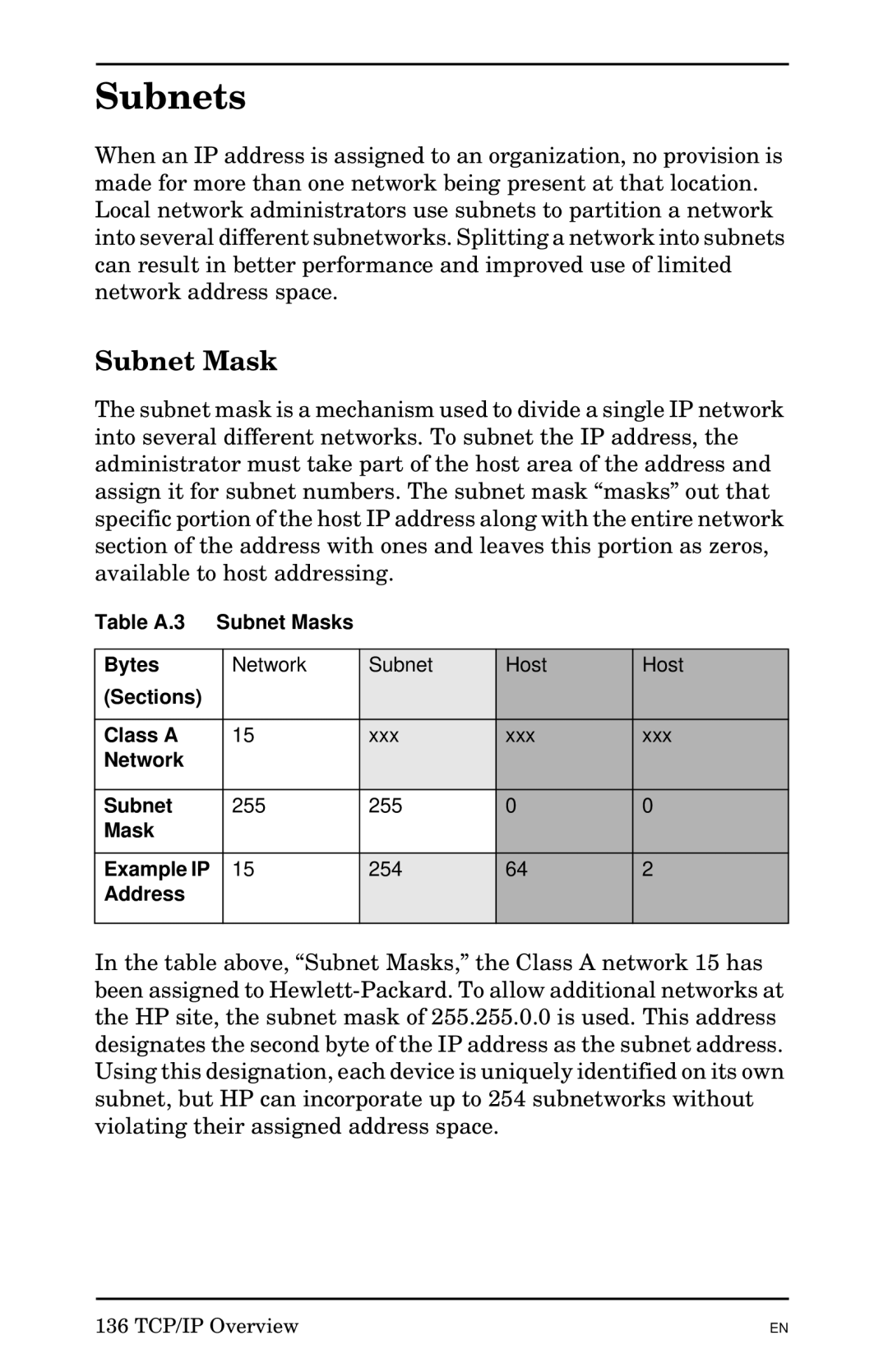
Subnets
When an IP address is assigned to an organization, no provision is made for more than one network being present at that location. Local network administrators use subnets to partition a network into several different subnetworks. Splitting a network into subnets can result in better performance and improved use of limited network address space.
Subnet Mask
The subnet mask is a mechanism used to divide a single IP network into several different networks. To subnet the IP address, the administrator must take part of the host area of the address and assign it for subnet numbers. The subnet mask “masks” out that specific portion of the host IP address along with the entire network section of the address with ones and leaves this portion as zeros, available to host addressing.
Table A.3 | Subnet Masks |
|
|
| |
|
|
|
|
|
|
Bytes |
| Network | Subnet | Host | Host |
(Sections) |
|
|
|
|
|
|
|
|
|
|
|
Class A |
| 15 | xxx | xxx | xxx |
Network |
|
|
|
|
|
|
|
|
|
|
|
Subnet |
| 255 | 255 | 0 | 0 |
Mask |
|
|
|
|
|
|
|
|
|
|
|
Example IP |
| 15 | 254 | 64 | 2 |
Address |
|
|
|
|
|
|
|
|
|
|
|
In the table above, “Subnet Masks,” the Class A network 15 has been assigned to
136 TCP/IP Overview
EN
